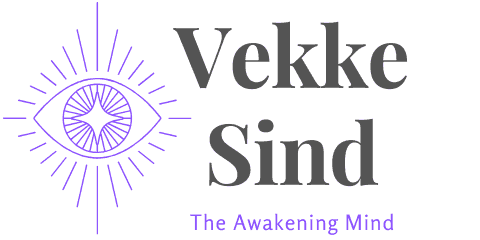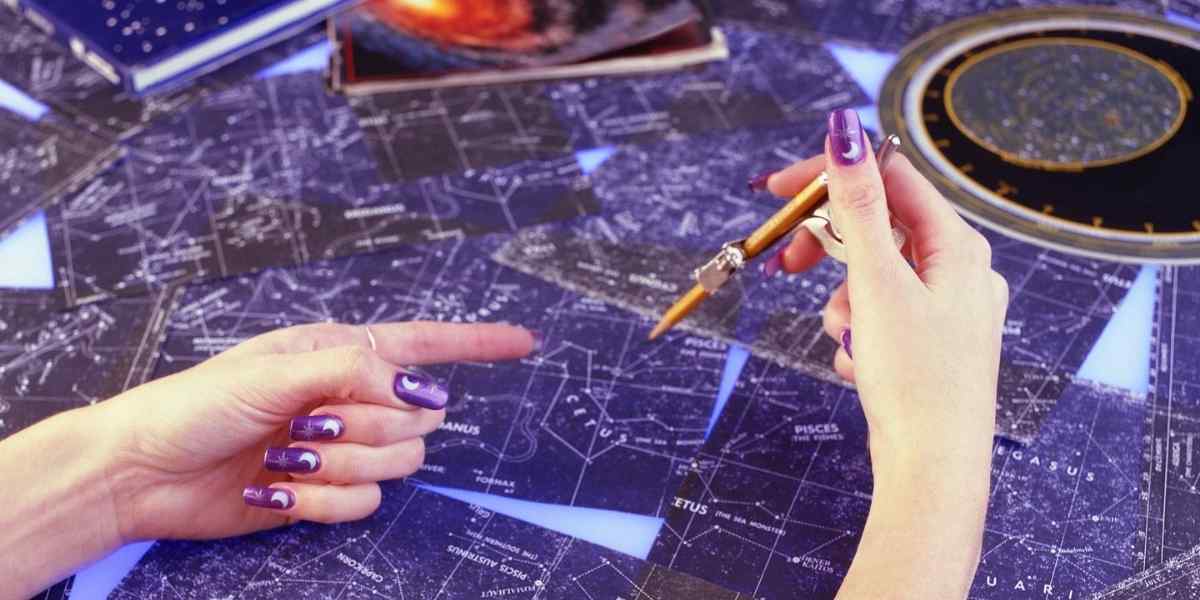What is happening between two astrology systems and why am I born under one sign and then it turns out that I was born in the previous sign, you must have surely asked yourself at least once in life.
Let’s discuss in more detail the differences between Vedic Astrology and Western Astrology and how they both work…
The greatest difference between Western and Vedic astrology is based on what system in astronomy they use. Western astrology uses the tropical system, while Vedic uses a true astronomical system.
Also, the way the charts are drawn differs because the western school uses circular and Vedic rectangular images of the sky.
Before we delve into the 9 differences between Western and Vedic Astrology, I want to point to the end of this article. I have created a Related Articles section where I’ve compiled a number of articles that are relevant to this topic. Make sure you check them out.
Table of Contents
Vedic & Western Astrology Use Different Systems in Astronomy
Before any other discussion regarding the two main astrology schools, you should clear out your doubts by knowing the facts about the “tropical” and “sidereal” terms used in astronomy.
Our standard, the one you can still find in its generic form in many magazines and newspapers, so-called Western or “tropical” astrology uses the tropical positions of the main celestial bodies, meaning Sun and Moon (as “luminaries”) and planets. And this simply means their projections onto the Earth’s surface.
To be able to determine the whole system correctly, western astrology or tropical astronomy uses 4 basic or cardinal points by measuring the lengths of days and nights.
This is why the first and starting point is the “Aries ingress point” when the Sun enters the first degree of Aries by crossing over the Celestial equator while moving into the northern hemisphere.
This is the moment during the year when the lengths of the day and night are equal. And it usually happens on March 21st and it’s called the equinox point marking the beginning of the spring season in the northern hemisphere.
As we have the spring equinox, we also have the autumn equinox, which takes place on September 23rd, and shows us that the Sun is entering the sign of Libra and heading toward the southern hemisphere over the Celestial equator.
Of course, we have the summer solstice, happening on June 20th or 21st as the marking point when the day is the longest, the first degree of Cancer, and the winter solstice, happening on December 21st or 22nd as the marking point when the night is the longest, the first degree of Capricorn.
Those four points are the “Holy Grail” of Western astrology because all calculations and system settings start from them. You can imagine them as the circle with the cross in it, the ancient and ever-present symbol in our Western civilization.
On the other side, if you choose to go to the observatory right on March 21st and ask any astronomer where the Sun currently is in the sky, the answer will be the same all over this planet – Sun is in the sign of Pisces, not in Aries.
Why is this happening, and what is the cause of all this confusion?
This is happening since astronomy and Vedic astrology both use sidereal or the “ancient” system for their calculations considering the positions of luminaries and planets and their projections onto the heavenly surface or the Celestial surface which differ from tropical because of the precession of the equinox.
The new cycle of the year begins when the Sun enters and aligns with the fixed star in the constellation of the sign of Aries, and this is why this system is also known as the Fixed Zodiac. And don’t forget, the sidereal Aries season begins around three weeks later than the tropical.
Having this in mind, now you can understand why some people are born, for instance in the sign of Gemini in Western astrology, while the Vedic school claims that their Sun is in the sign of Taurus.
If you want to know your exact planetary positions in both systems, you can operate with the fact that Western astrology is currently 23, 5 to 24 degrees “ahead” of Vedic astrology.
Vedic & Western Astrology Use different mythological or archetypal stories
The next confusing situation usually happens with the terminology. In both schools, the basic points are absolutely the same.
There are 12 signs and 12 houses, and all signs and houses have exactly the same interpretation, except for the fact that Vedic astrology can use the ninth and tenth house as the image of the father, besides the fact that the ninth house represents important teachers.
At the same time, western astrology recognizes the father solely from the tenth house of a horoscope.
When we speak about terminology, the first difference can be found in the fact that western Zodiac names mainly originate from Greek mythology, while Vedic school uses Hindu names. This is why you shouldn’t get confused when you see those titles because signs are known by the following names:
- Aries – Mesha
- Taurus – Vrishaba
- Gemini – Mithuna
- Cancer – Karka
- Leo – Simha
- Virgo – Kanya
- Libra – Thula
- Scorpio – Vrischika
- Sagittarius – Dhanus
- Capricorn – Makara
- Aquarius – Khumba
- Pisces – Meena.
In our modern times, many Vedic astrologers use Western names for signs, but if you find or hear about these names, now you will know they have the same meaning in both systems.
All astrologers use historical or mythological references while they are reading the charts, and Western school is inclined toward Greek mythology because those stories are deeply rooted in the subconscious minds of Western people.
Everything you desire, experience, suspect, instinctively react to, and all those emotions and actions derived from those emotions can be found in Greek mythology.
On the other side, Vedic astrologers use Hindu mythology, basically interpreting the same events with some slight differences in style.
Vedic & Western Astrology, The Sun vs the Moon
Western astrology gives priority to the position of the Sun in our birth charts, while Vedic school emphasizes the importance of the natal Moon or the position the Moon was at the moment we were born.
This can cause another confusing situation, for instance, when you know you are born as Cancer in both systems and now a Vedic astrologer claims you are an Aquarius. This frequently means that this particular astrologer looked at your natal Moon position.
The placement of your natal Moon is exceptionally important because the Vedic school relies on “nakshatras” or the main 27 Moon stations.
(There is one hidden nakshatra also, so some systems mention 27, while others know there are 28 Moon stations. And this happens because the movement of our Moon is a bit irregular in time.)
Each nakshatra has its own unique story and this is why you shouldn’t be surprised if a knowledgeable astrologer can basically describe your whole life just by looking at the precise position of your natal Moon solely.
Chart construction
The western chart is always circular and house division doesn’t have to match with Zodiac signs.
Due to many astrology house systems (find more about Porphyry, Placidus, Koch, or many more) one or several of your chart houses can contain one, two, or even three Zodiac signs. And those charts can really look distorted if you were born close to the North or South Pole.
As an example, you could have your Ascendant or a rising sign around the end degrees of Cancer, and the major part of your first house placed in Leo, and this portrait you mainly as a Leo, with some Cancer influences.
However, this is not true for Vedic astrology which uses the one sign – one house rule. In the same example, you could have your Ascendant or Lagna rising at the end degree of Cancer, but this strictly means that your first house is placed in Cancer and it can’t stretch anywhere else.
Lagna, in this case, doesn’t mean the dividing line, but the highest point in that particular sign. Something like the roof over your physical house with the highest point on it.
Vedic astrology uses two types of rectangular charts, the south, and the north Indian style.
And while you will always find the rising sign of a person on the left side of the circle in Western schools, south Indian Vedic charts are fixed beginning with the sign of Pisces in the upper left corner and going clockwise, all other signs are orderly present.
The astrologer just puts your planets and rising line in the already existing basic setting.
Planets and planetary aspects
In both systems, luminaries and planets (known as “grahas” in Vedic school) carry the same meaning and perhaps you should be able to recognize their names, as follows:
- Sun – Surya
- Moon – Chandra
- Mercury – Budh
- Venus – Shukra
- Mars – Mangal
- Jupiter – Guru
- Saturn – Shani
- Uranus – Prajapati
- Neptune – Varuna
And very important intersection points of the Sun and Moon paths known as the South Node of the Moon – Ketu and the North Node of the Moon – Rahu.
However, their mutual planetary aspects differ. The Western school uses trigonometry structures dividing them into basic (conjunction, opposition, trine, sextile, square) and higher aspects (in conjunction, septile…). All celestial bodies aspect each other all the time, by just changing their frequencies and strengths.
This is not the case with Vedic astrology which has determined a set of strict rules in this case. For instance, Venus can produce only the aspect of conjunction and won’t have any other influence on the chart, except for her general position in nakshatra.
Speaking of conjunctions in charts… Western astrology operates with the planetary orbs of influence having in mind the magnitude of those bodies, while Vedic astrology doesn’t bother so much with this fact.
For instance, you could have your natal Sun placed by the very end of Virgo, and your natal Mercury by the first degree of Libra. For Western astrology, this is clear conjunction, and it isn’t for Vedic.
In another example, you can have your natal Sun by the very beginning of the sign of Virgo, and your Mercury by the end of this same sign.
\For Western astrology, this is not a conjunction because their orbs don’t mix, they are too far away, but for Vedic is clear conjunction because those two bodies are placed in the same sign/house.
Planetary periods
This is the part where Vedic astrology stands very high because this school uses complicated calculations to determine which planets determine your life in a particular time frame, and which planetary period is currently running.
One planetary period is called “Dasha” and there are several sub-periods as well.
Western astrology uses secondary and tertiary progressions for the same purposes and those techniques can be highly unreliable.
Divisional charts
This is the unique trait of Vedic astrology because this system calculates the “tree of life” through the natal chart producing 144, so-called, divisional charts that are used for several purposes.
So, for instance, D9 or Navamsha is the most important because it shows your inner transformation as you get older, your true self; D10 will show your karma and career, D4 your family of origin, and so on…
Remedial Measures – Mantras
You know, an astrologer’s role in your life is to basically warn you when things could go wrong, or how to productively use the destructive forces. It’s the same as with the weather forecast.
If you know it will rain, you will carry an umbrella and won’t get wet. The same applies to astrology, except for the destiny or the karma part.
The Western astrologer could, for instance, tell you that this negative period you are going through will end up in two years and in the meantime, you should do this instead of that to keep this negativity at the lowest level.
The same person might or might not offer you to use some affirmations, but with or without those affirmations, the results will stay the same during those two years.
Well, Vedic astrology praises itself by the choice of the proper affirmations or “mantras”, the shorter or longer chants you should speak or sing during a certain time frame, which again, can last for 40 days, or a few years.
The only honest advice here is if you don’t believe affirmations or mantras will truly help you in any way and those activities will just frustrate you, then don’t do them.
Remedial Measures – Jewelry
And the same goes for jewelry as a remedial measure, because many old-school Vedic astrologers advise their clients to buy this or that gemstone, with this or that precious metal, to wear the ring on this or that finger, and so on… Don’t do this, if you truly don’t believe it will help, and also, if you don’t have the financial means to play with such “toys”.
Have in mind that karma or destiny will play their part, and, that many people on this planet became successful or rich without any “remedial measures”.
Get a Psychic Reading, 5 Minutes Free
If you are interested in getting a psychic reading, then as a VekkeSind reader, you can get 5 minutes free.
Try it now, click here for a 5-minute reading FREE.
I’d love to hear about your experience. Please connect with me, after you’ve had a reading…
- 7 Most Important Aspects of a Natal Chart
- What zodiac sign is July 22?
- What zodiac sign is June 21?
- Why do I have multiple zodiac signs?
Shop For My Favorite Items on Amazon…
I love my Asakuki Diffuser, I have this going in my living room or my office with either peppermint or lavender. The diffuser holds more water than other diffusers and lasts longer. It also has a timer so that it doesn’t run dry. The Diffuser adds a nice gentle scent to my home.
I also love having my White Sound Machine and my Asakuki Diffuser running in my living room. Sometimes I will choose the sound of rain or the ocean or even thunder. It depends on my mood.
I’ll fill the diffuser with lavender or peppermint. With the thunder in the background and the smell of peppermint, it’s like being whisked away to a faraway place!
I really love the Himalayan salt Lamp and my Crystal Tree of Life. I have them in my office and they create a “zen” feel for me while I’m working.




Leave a Reply